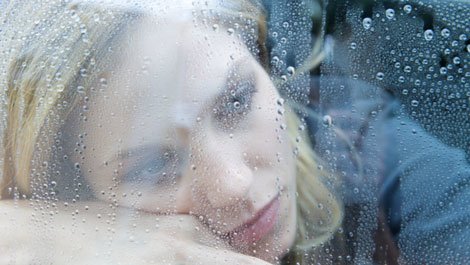
It’s natural to be happy and to love the warm weather and sunshine. But as things quiet down in the fall and winter, I encounter clients who feel depressed and gloomy when the days become shorter and darker. This is often an indication of SAD, or “Seasonal Affective Disorder.” Every year when winter rolls around, people ask me if there are ways to battle their mood swings by using attitude and behavioral change rather than medication.
People who complain of SAD experience decreased energy, increased appetite with weight gain, excessive daytime sleepiness and social withdrawal. Does this happen to you when the summer is just a memory? If so, ask yourself a couple of questions. First, are there advantages to shorter and darker days? Second, what can you do to structure your time differently to turn them into something positive?
One person I know changed her attitude. She decided to start looking at winter evenings as cozy excuses to curl up with a good book. Another person got into the habit of reminding himself that “5 o’clock is 5 o’clock, no matter if it’s light or dark out.”
Studies have shown that some people need more sunlight than winter can provide. They often make extra efforts to get out into that light on bright sunny days, “storing up” their exposure, in a manner of speaking. I have one friend who has learned to enjoy the calming sound of rain. Pleasure comes in many forms, and some of them may be dark or wet. There are solutions to SAD, both mental and behavioral. You don’t have to be a helpless victim of any pesky “disorder.”
Some people have found success using “light therapy,” employing a device specifically designed to treat SAD. A light therapy box (aka, a “phototherapy box”) provides constant “outdoor” light, and is thought to bring about a biochemical change in the brain that lifts mood and reduces the SAD symptoms.
Some people prefer “dawn simulation,” where a bulb progressively changes in brightness to mimic sunrise and sunset. Light box therapy, which some studies have shown works best in the morning, may be less convenient for people who have busy schedules, but may be more effective than dawn simulation. Either way, it may take up to 2 weeks before a subject begins to respond to light therapy, and stopping it almost always causes a relapse back into depression.
Years ago I spoke with a mental health professional who had relocated from southern California to Alaska. He was amazed by the difference in moods caused by the lack of light in northern Alaska. His relocation from one of the sunniest places to one of the darkest made for an interesting scientific observation with respect to SAD. It seems reasonable to assume that if light starvation during the winter months in Alaska can contribute to a lower mood, then more moderate “light diets” throughout the rest of the country can impact people as well.
As a therapist for many years in the Washington, DC and Baltimore areas, I didn’t encounter nearly as much seasonal related “blues” as I have here at the beach. Some people from big cities even comment to me that they never suffered from SAD until they moved to the beach. Why is that? Well, in a resort that’s based on summer activities, there’s obviously much less to do physically in January than in the busy summer months. In a large metropolitan area, there are lots of year-round things to do. In a summer resort, winter months usually bring decreased physical and social activity as well as shorter days.
Sometimes people succumb to the environment around them rather than embracing it for whatever unique advantages it may bring. That’s why attitude is so important! To a great extent, the environment is what you make of it. By creatively reframing your view of winter, and then adapting to it, your mind and brain will remain stimulated and engaged all year long. The summer is lots of fun now, but when it gets cooler and the days get darker, stay busy to raise your spirits. It’s just might keep you from feeling SAD.
Follow Dr. Hurd on Facebook. Search under “Michael Hurd” (Rehoboth Beach DE). Get up-to-the-minute postings, recommended articles and links, and engage in back-and-forth discussion with Dr. Hurd on topics of interest. Also follow Dr. Hurd on Twitter at @MichaelJHurd1
